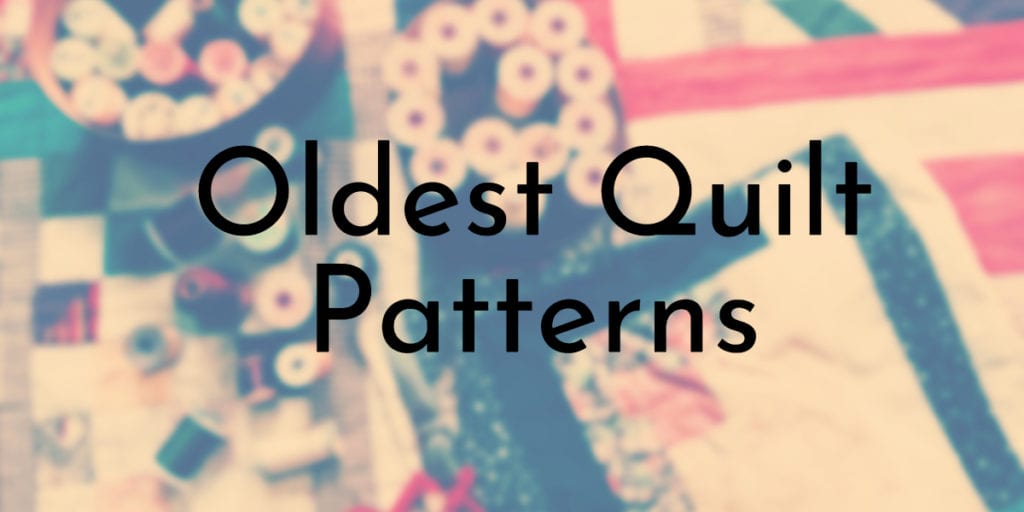Quilting has been both a necessity and a popular hobby across the years, with origins that date as far back as 3,400 BCE!
That’s right: evidence of the first-ever quilt is housed in the British Museum, and sits on the shoulders of an ivory figure of an Egyptian pharaoh. The figurine is wearing what looks to be what we recognize today as the modern quilt.
When you think of quilt designs today, they may not feel nearly as “ancient” to you as much as…well, antiquated. While your mind probably associates quilts with “grandma’s favorite accessory” more than medieval blankets worn for warmth and comfort, the truth is that the history of the quilt extends much farther back than you probably imagined.
Read on to discover the eight oldest patterns ever used throughout the history of quilting.
8. Dresden Plate
Est. year of origin: Early 20th century
Origin/nationality: German
Popularity: Common
Significance: Decorative
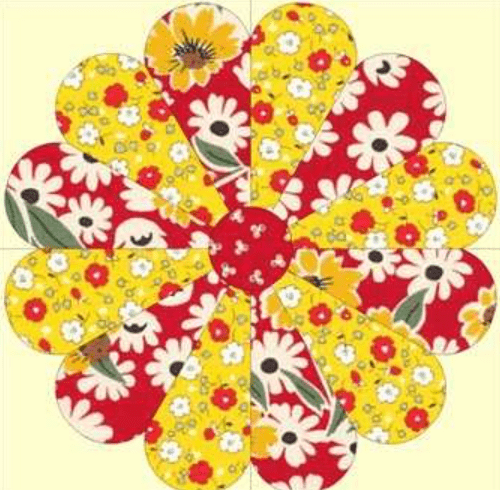
First inspired by the design of German porcelain plates (presumably produced in the city of Dresden), the Dresden quilt pattern forms flower-like designs that contain fruit, flowers, and other nature-inspired images in each block. It is reflective of the romantic era that occurred in Europe beginning in the 19th century.
Often colorful and cheerful, the Dresden pattern is created by piecing together the petal-shaped cut-outs of the design. Once a cut-out flower has been sewn, it is then stitched to a block of the quilt.
Did you know?
Like other quilts around this time period, women who sewed Dresden-patterned quilts made them out of feedsack material. They would save and trade feedsacks until they had the colors and patterns they needed for a complete quilt; often, they would send their husbands into town with swatches, who would try to obtain the desired material for their wives.
7. Log Cabin
Est. year of origin: Mid-19th century
Origin/nationality: English/Irish
Popularity: Common
Significance: Symbolic
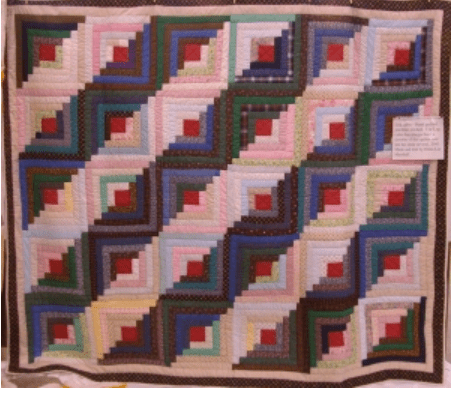
The Log Cabin quilt is associated with early American history, but actually, its true origins begin across the pond in England and Ireland. Early American settlers—namely, Puritans—continued the quilting tradition, using it as they adapted to a new life. Thus, the Log Cabin pattern is primarily known as North American.
This type of design is a patchwork quilt that consists of narrow strips of fabric resembling logs (hence the “Log Cabin” moniker). Blocks of this pattern typically alternate between light and dark, and are repeated throughout the quilt.
The most common type of fabric for this quilt is cotton, but historically depended upon the quiltmaker’s economic status. The fabric could be anything, from wool to silk to velvet.
Did you know?
The pattern of the Log Cabin quilt was quite meaningful to pioneers traveling to the American West. To them, it was symbolic of home, warmth, and security, with the center square of the quilt traditionally red to represent the hearth—the focal point of a home. Moreover, the light and dark color scheme of the Log Cabin design were symbolic of the sun’s movements across the sky, portraying both light and shadow.
6. Pinwheel
Est. year of origin: Mid-19th century
Origin/nationality: American (West)
Popularity: Occasional
Significance: Symbolic/utility

The Pinwheel quilt pattern depicted the vanes of a water pump windmill, which were common along the Oregon Trail in the 19th century.
To get the pinwheel design, all that is required are triangular cut-out shapes, though sewing them all uniformly (and on a slant) can be challenging. The pattern requires four triangle shapes to a single block, with the points touching sharply at the center to resemble a traditional pinwheel.
Like other quilts and patterns, the modern Pinwheel quilt can be made with a variety of fabrics, and the triangular shapes may even be dyed in vibrant colors to achieve a more mesmerizing effect!
Did you know?
Pinwheel quilts that were made during the Great Depression era in the United States (1920s-1930s) were often pieced together with cotton feed sacks. By the year 1925, the manufacturers of these feed sacks became aware of the fact that women used their material to make quilts—and even clothes and curtains—and began producing the fabric with patterns and prints.
5. Nine Patch
Est. year of origin: Early 19th century
Origin/nationality: American
Popularity: Common
Significance: Utility (every-day use)
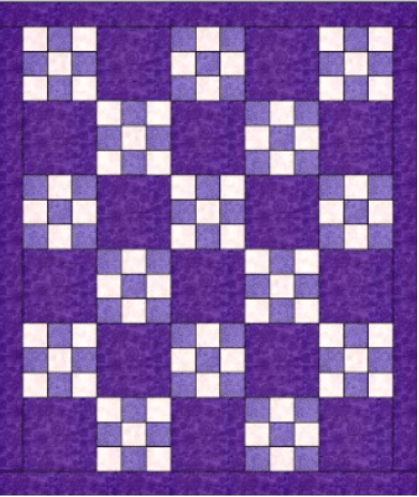
The Nine Patch quilt pattern emerged in the early part of the 19th century. Often, young American girls would learn to sew using this pattern, as it is relatively easy to stitch together the fabric once the pieces are cut.
The technique of the Nine Patch quilt is considered simple in the quilt-making world, and involves stitching together several uniform squares or triangles. These shapes may be cut with a rotary cutter and a ruler to ensure that the finished product looks presentable.
Originally, the Nine Patch quilt was valued for its simplicity; since quilts were made by continually building onto the top of a work in progress, the Nine Patch design was invented as a way of making the process easier by attaching pre-cut blocks of fabric as the quilt approached its full size.
Did you know?
Nine Patch quilts were a way for pioneer women to use the scraps they had for a functional purpose without spending money on new material; the design was quite popular during the Civil War era as well for this same reason. Thus, the design (and the quilt itself) became known as a lower-class product.
4. Friendship Quilt
Est. year of origin: Early 19th century (1808)
Origin/nationality: American (New England)
Popularity: Rare
Significance: Gift
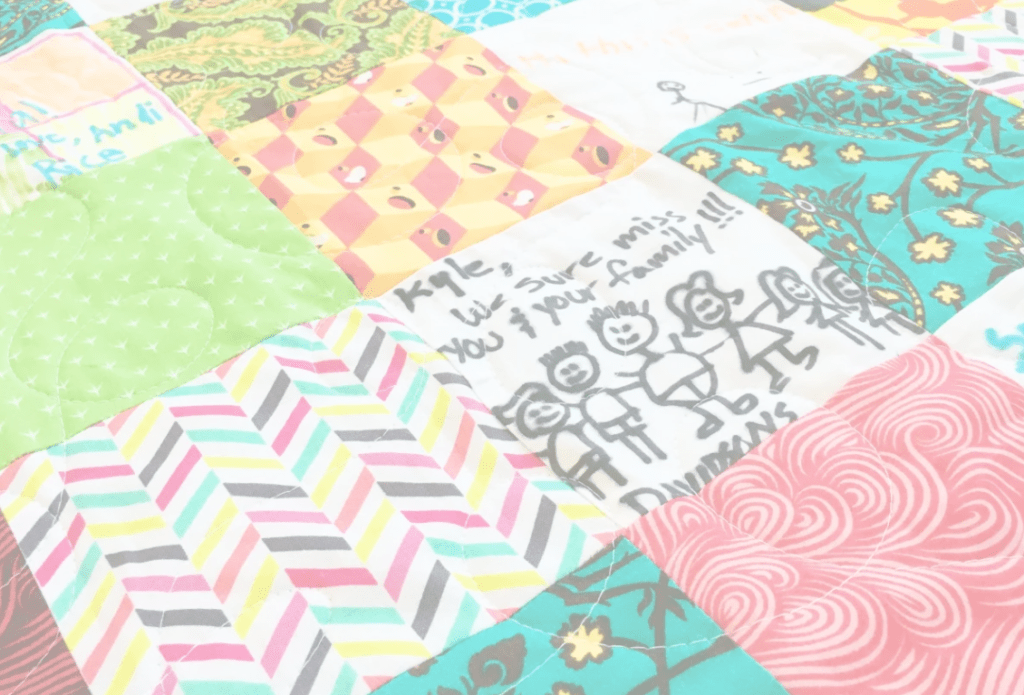
Originally a New England fad, friendship quilts gained a lot of traction during the early to mid-19th century, when they were made and signed by loved ones as a going-away gift for someone special.
The friendship quilt pattern is fairly simple, if time-consuming. The process historically involved collecting enough fabric, piecing blocks together, completing the top half of the quilt and then the bottom, and then finally finishing it after quilting. The embellishments were added after construction, usually in the form of signatures, verses, or even small drawings.
Friendship quilts are often completed in secret, as a surprise for the recipient. They do not always have to be going-away gifts, as they were originally.
Did you know?
If there were multiple people “signing” a friendship quilt, the person with the best handwriting was sometimes selected to write all of the names on behalf of those who were included in the gift-giving. In other cases, each person contributing would get a square of fabric in advance on which to sign their name, and then give them back to the quilter for construction.
3. LeMoyne (Eight Pointed) Star
Est. year of origin: Early 18th century (or later)
Origin/nationality: French
Popularity: Common
Significance: Spiritual
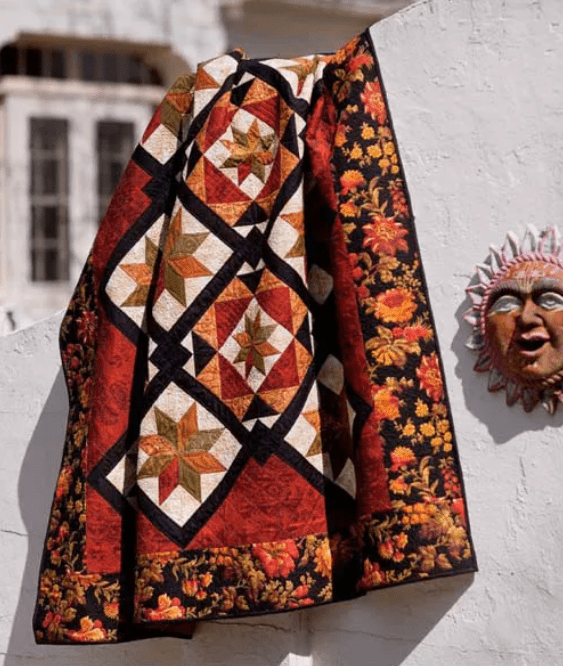
There are a few theories surrounding the original design and creation of the LeMoyne Quilt, otherwise known as the 8-pointed star pattern. One of them suggests that the first of these quilts may have made an appearance at Versailles, home of King Louis XVI and Marie Antoinette of France!
Allegedly, Jean-Louise Moyne designed the tiles of this pattern for Versailles, and also sculpted for the palace in the early 1700s. This pattern then ended up on his cousins’ coat of arms, Jean-Baptise and Pierre LeMoyne, who would go on to found New Orleans. From here, the pattern became a part of early American quilting.
The LeMoyne star has eight points per star on the quilt, with each of the outside angles measuring 45 degrees. It’s a precise, and therefore more complex, quilt pattern to make.
Did you know?
An early 1800s LeMoyne star quilt pattern is housed in the Smithsonian National Museum of American History in Washington, D.C. It was hand-sewn in Massachusetts and is made out of cotton and wool, which were common fabric selections for quilting at the time.
2. Rose of Sharon
Est. year of origin: Unknown (popular throughout 19th century)
Origin/nationality: American
Popularity: Rare
Significance: Spiritual
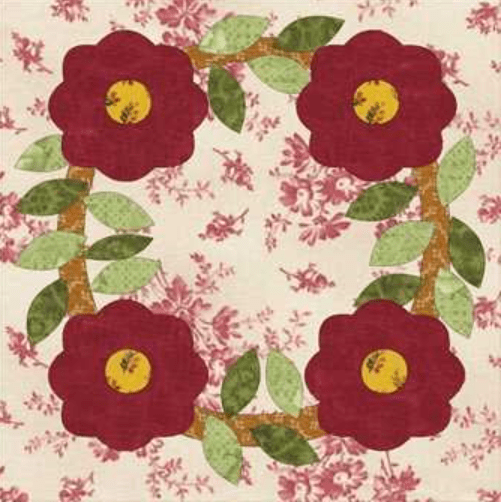
According to the National Park Service, which features research on quilts on their Homestead National Historical Park page, The Rose of Sharon design is believed to be one of the oldest quilt patterns in existence. The exact date of origin is unknown, but the applique reached the height of its popularity during the 1800s.
Though the quilt has roots in American history, the Rose of Sharon is actually mentioned in the Bible, and may refer to a Palestinian flower that grows on the plains of Sharon. The English translation substitutes the word “rose” for “tulip,” as is described in the original text.
To create a Rose of Sharon quilt, two 12” block patterns are required. Patterns can vary between pieced blocks and blocks that feature the rose to break up the design, or can feature a rose in each block.
Did you know?
Another name for the Rose of Sharon quilt is “The Whig Rose” pattern, which stems from the 1828 U.S. presidential election in support of the Whig party. At the time, the Whigs hoped to defeat Democratic nominee, Andrew Jackson, who went on to win the presidency. The Whig party dissolved in the mid-19th century, but this quilt applique remained.
1. Crazy Quilt
Est. year of origin: Unknown
Origin/nationality: Multicultural
Popularity: Rare
Significance: Utility
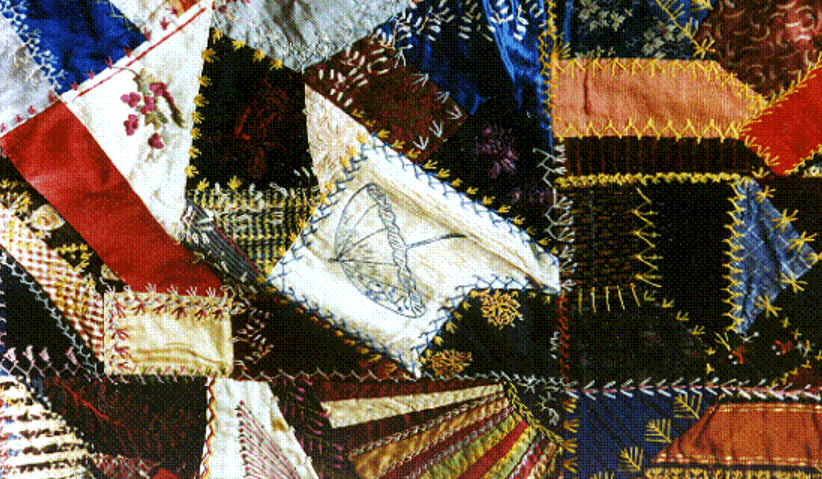
The crazy quilt design is likely the oldest quilt pattern, according to the National Park Service and other research. It is believed that textiles resembling a crazy quilt were discovered in early Egyptian tombs, as well as in European courts pre-dating the 17th century.
Crazy quilts are made by sewing together various scraps of fabric, though the fabric—seemingly random swatches pulled from here and there—is always fine material. Crazy quilts are always made of silk, satin, and other fancy material.
Anything and everything made of fine fabric would be used to stitch together a crazy quilt. Examples are household linens, men’s and women’s high-end clothing, lace from a wedding veil, or other sentimental items. To make a true crazy quilt, the fabric has to be 1) high-quality; 2) of sentimental value.
Did you know?
Despite their presumably ancient origins, crazy quilts weren’t widely popular until the Victorian era, when Queen Victoria allegedly began collecting keepsakes from her marriage with her deceased husband. Among Americans, the trend gained traction at Philadelphia’s Centennial Exposition in 1876.
OTHER POSTS YOU MAY BE INTERESTED IN


